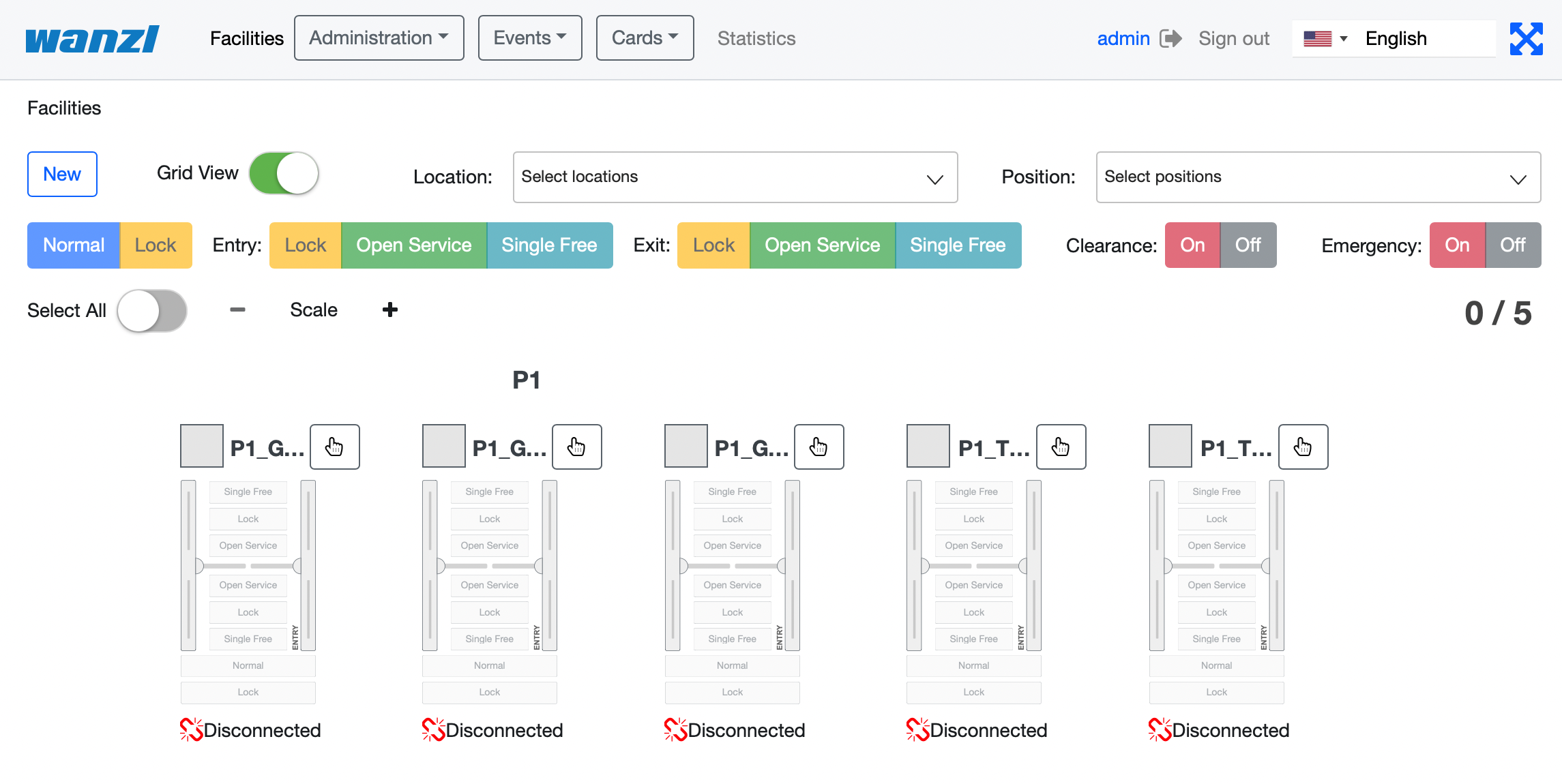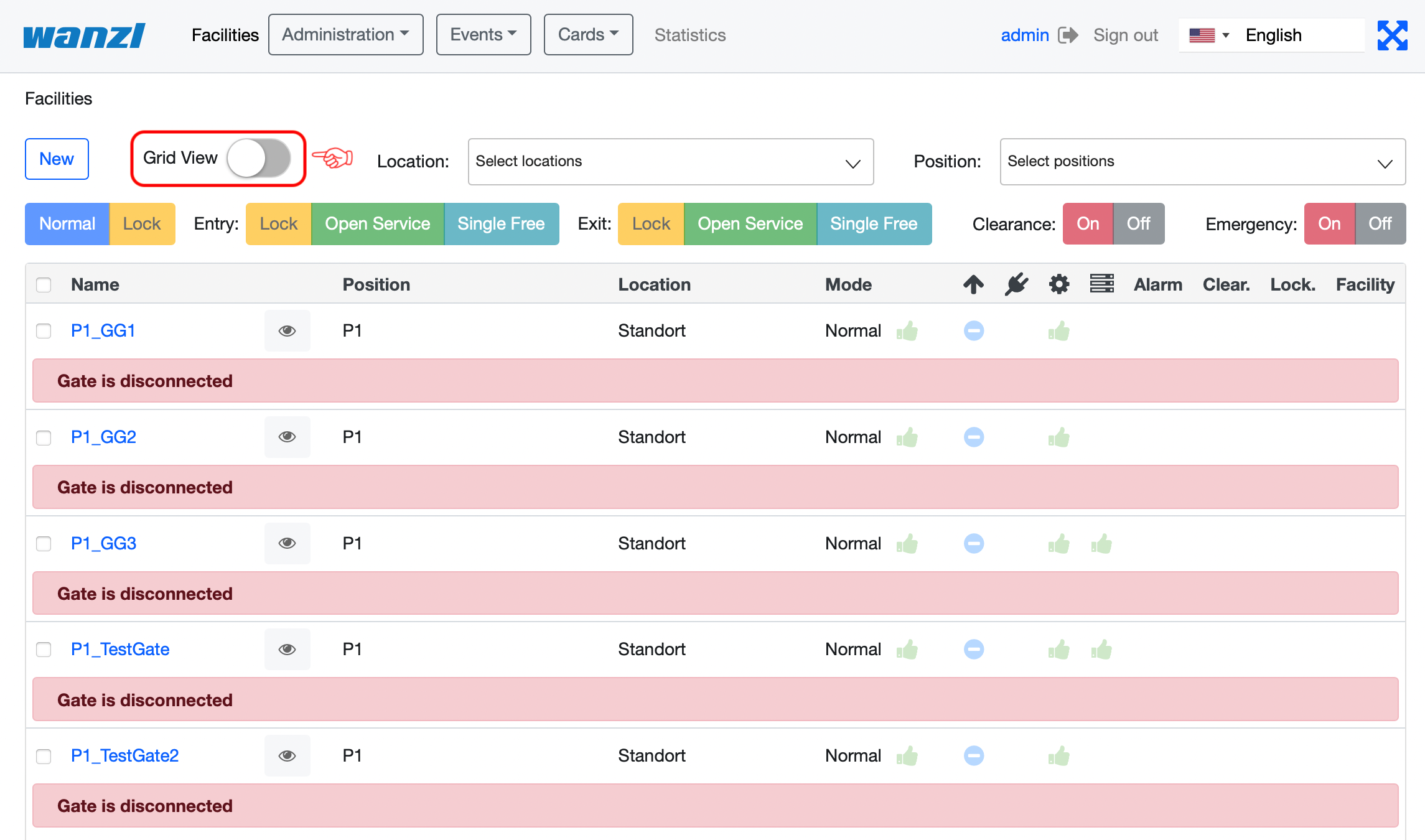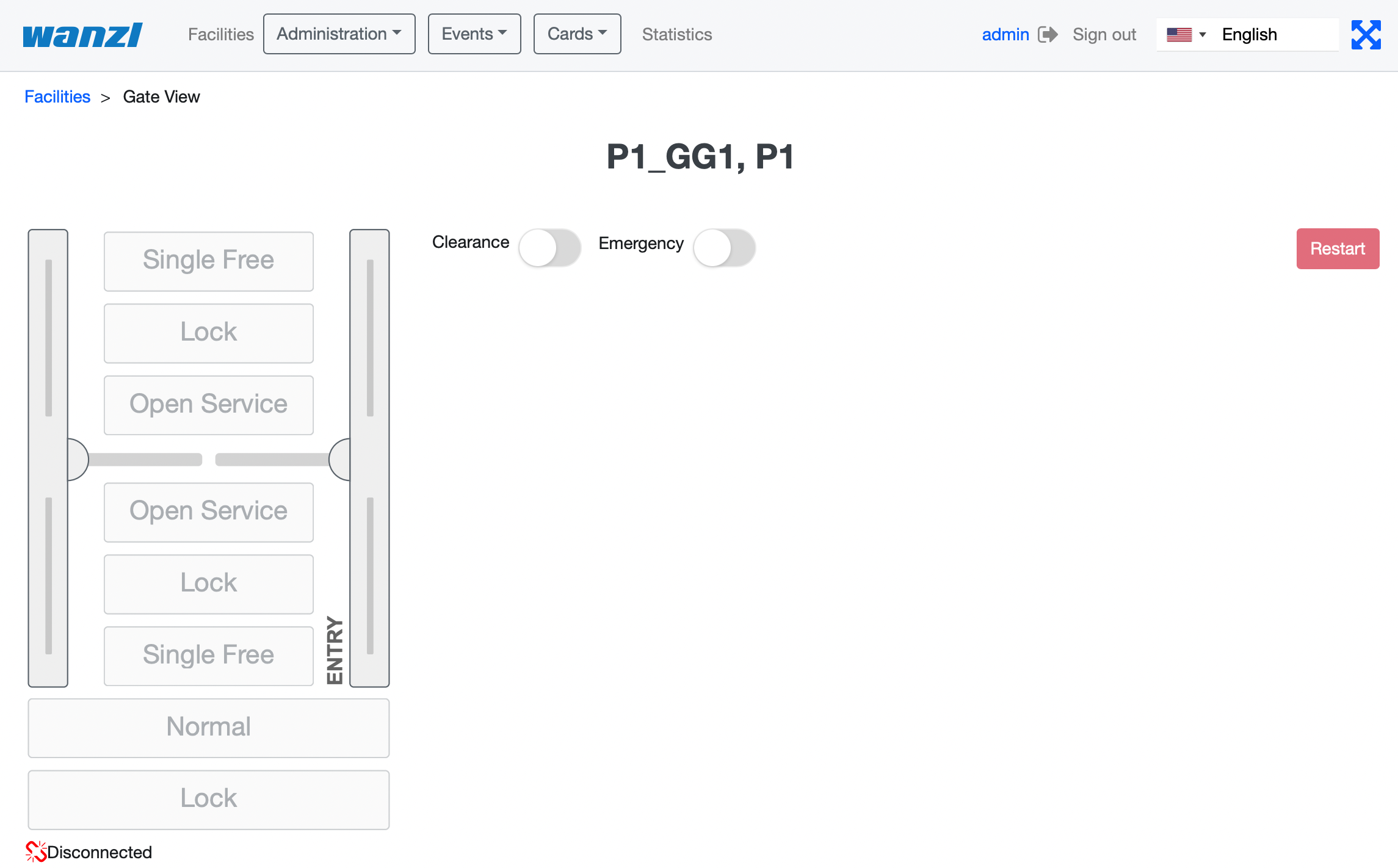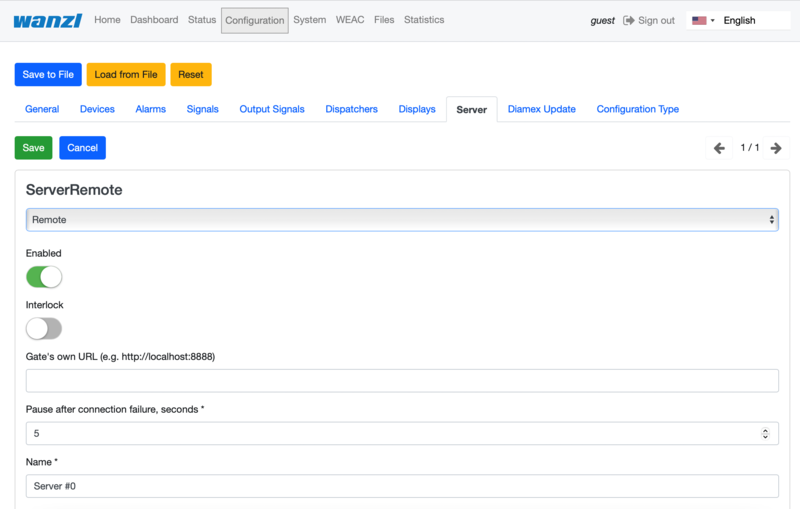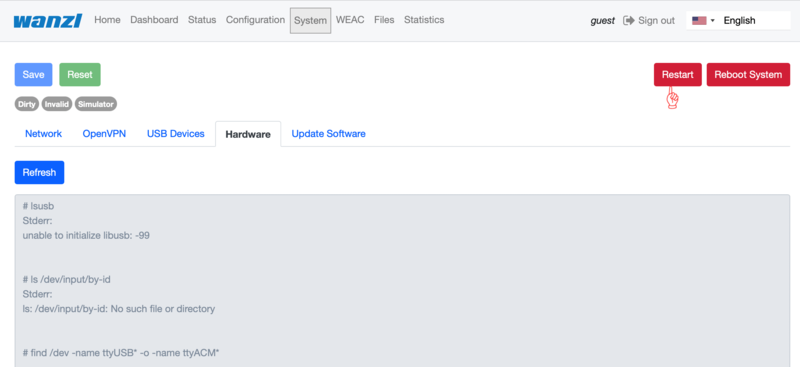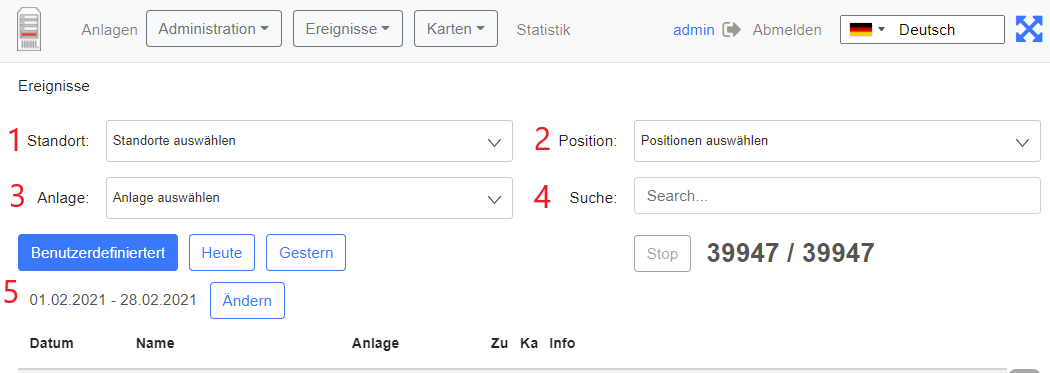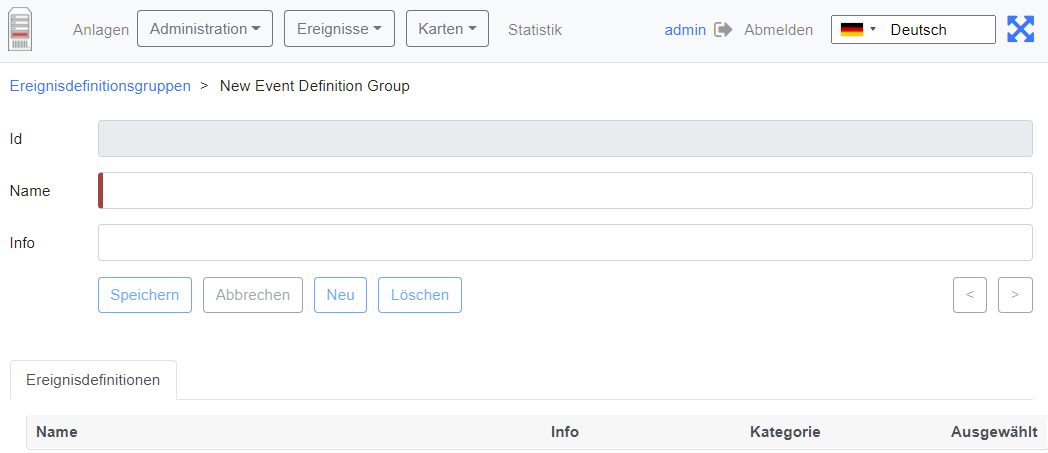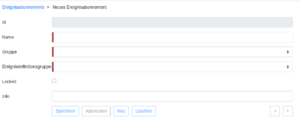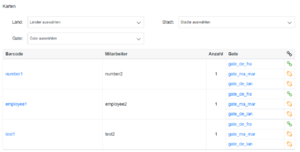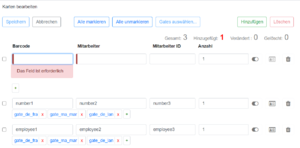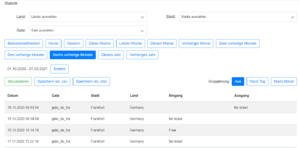Wanzl Access Manager ~ Management Dashboard
Inhaltsverzeichnis
General
The Wanzl Access Manager offers a central dashbaord for access controls in a homogeneous interface, displays the corresponding states and supports the user in the administration of these components. The Wanzl Access Manager is a leading platform for monitoring and managing access controls of security areas.
Sign Up
Please enter the login information provided by support here to log in to the central dashboard.
Headline
| Number | Function |
|---|---|
| 1 | Button Management Dashboard |
| 2 | Administration |
| 3 | Events Button |
| 4 | Cards Button |
| 5 | Statistics Button |
| 6 | Logged in User |
| 7 | Log out Button |
| 8 | Languages menu |
| 9 | Adjust the display to entire width of the screen |
Menu items
Facilities
https://<dns-name or ip-address>/gatesIn this view, all access controls are displayed in an intuitive interface. There are grouping options in two categories. First, you can group by Location. Within the location you can then summarize different Locations. Individual gates can be added via the menu item "New".
When the light view is off, the access controls are shown in the list.
When one or more facilities are selected with the control,
the facilities can be controlled with the following buttons:
The Gate display contains the following controls:
The symbols under the gate convey various information about it:
| Symbol | Description | Note |
|---|---|---|
| No connection to the gate | ||
| The gate is in the Normal state | ||
| The gate is in the Locked state | ||
| The gate is in the fire alarm state | ||
| The gate is in the emergency open state | ||
| The cleaning mode is active | ||
| Alarm is active at the gate | ||
| The gate is permanently open | ||
| One or more devices at the gate have failed | ||
| Current selected configuration of the gate | Only if there are two or more configurations at the gate |
Gate-View
In this view, you can observe the state of each gate, control the gate, and apply the gate's configurations (if there are two or more).
These buttons allow you to perform various actions:
Set up a new Gate
Please click the button New
In this view you create a New gate. The fields Names, Displayed Name and Position of the Gate must be verified with values. Press Save then click on Facilities.
You can now see in the view that you have created a NEW gate,
in this case the sixth gate in this view.
In the next step you connect the gate to the server.
https://<IP-Adresse des Dashboards>To do this, check on the General tab that the correct gate name has been entered.
Then check the following points on the Server tab.
Server#0 (server)- must be set to remote.
Activated slide-switch is activated.
Your server should be entered under Name*.
Your URL should be entered under URL*.
Gate should be entered under Username*.
Your password should be entered under Password*.
Save at the end.
In the next step, please click on System in the top bar.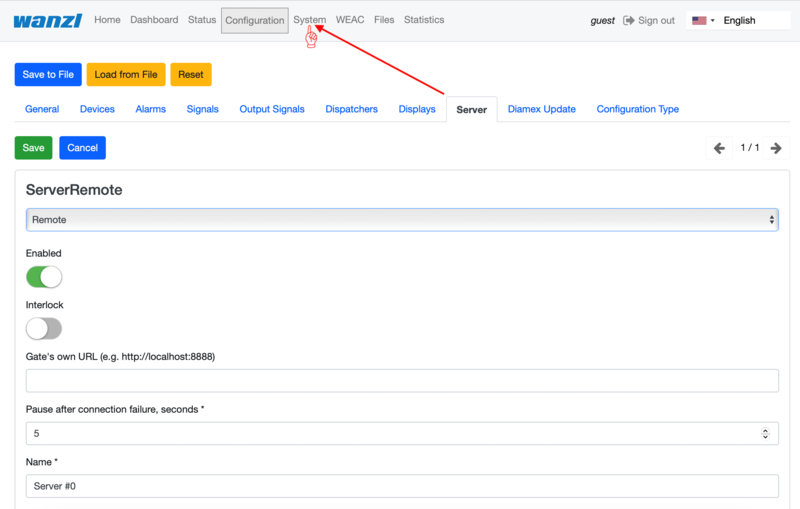
You will now see the following display, here please press restart once. Now your new gate should be connected.
Finally, you can check the connection in the Status tab. CONNECTED must now appear under State.
Edit existing Gate
https://<dns-name or ip-address>/gatesYou are in the same view as where you would create a new gate.
Please move the slide switch "Grid view" to the left.
Datei:GridViewFMCU.png In the view click on the name of the gate which you want to edit (in the example P8_TestGate).
Datei:GridViewSelect.pngIn this view, please press the "Edit" function.
Datei:PressEdit.pngYou can now edit the gate in this view.
Remove Gate
https://<dns-name or ip-address>/gatesYou are in the same view as where you would create a new gate.
Please move the slide switch "Grid view" to the left.
In the view click on the name of the gate which you want to delete (in the example P8_TestGate).
In this view, please press the "Delete" function.
To be on the safe side, you will now be asked again whether you really want to delete the element? Please confirm this.
After deleting, you will automatically be shown the next gate (here in the example P1_TestGate2). Please click on attachments here.
You will then see in the grid view that Gate P8_TestGate is missing and has been successfully deleted.
Datei:Bildschirmfoto 2022-02-22.png
Administration
User
https://<dns-name or ip-address>/usersOn this page you can see an overview of all users Datei:FMCU Users.png
| Number | Function |
|---|---|
| 1 | Create new user |
| 2 | Filter users by location |
| 3 | Filter users by position |
Set up new User
Press under User on the button New
https://<dns-name or ip-address>/new-user| Field Name | Description |
|---|---|
| Id | Automatically generated unique number of the user |
| Username* | Username of the user to login |
| Password* | User's password for login |
| Email address of the user for sending log messages | |
| First name | User's first name |
| Last name | Last name of the user |
| Info | Description of the user |
| Superuser | The highest rights are assigned to the user |
| Locked | The user's login is blocked |
| Disable notifications | The user does not receive any notifications in the FMCU Management Dashboard |
* Strictly required fields Through the button Save the new user is created.
Edit existing User
Press under User the user to edit
Event Notifications
Under this tab, the notifications can be selected which the user should receive.
Note: If the checkbox Disable notifications is set, no notifications are displayed regardless of these settings.
Locations & Positions Tab
You can set different locations in countries and cities. Separate access rights can be defined for each location via the authorization model.
Groups Tab
This tab allows you to customize the user's group memberships.
Permissions Tab
The user's permissions are displayed under this tab
All changes are applied by clicking the Save button.
Groups
https://<dns-name or ip-address>/groupsOn this page you can see an overview of all groups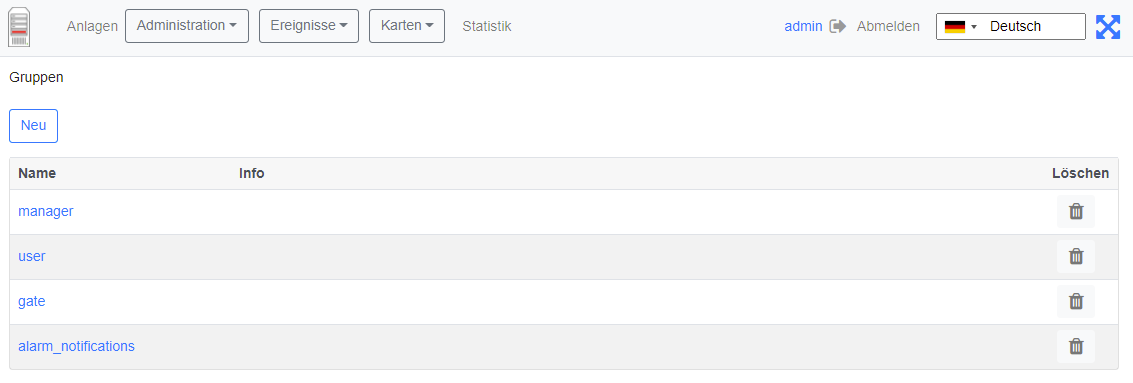
Set up new Group
https://<dns-name or ip-address>/new-groupClick under Gruppen the button New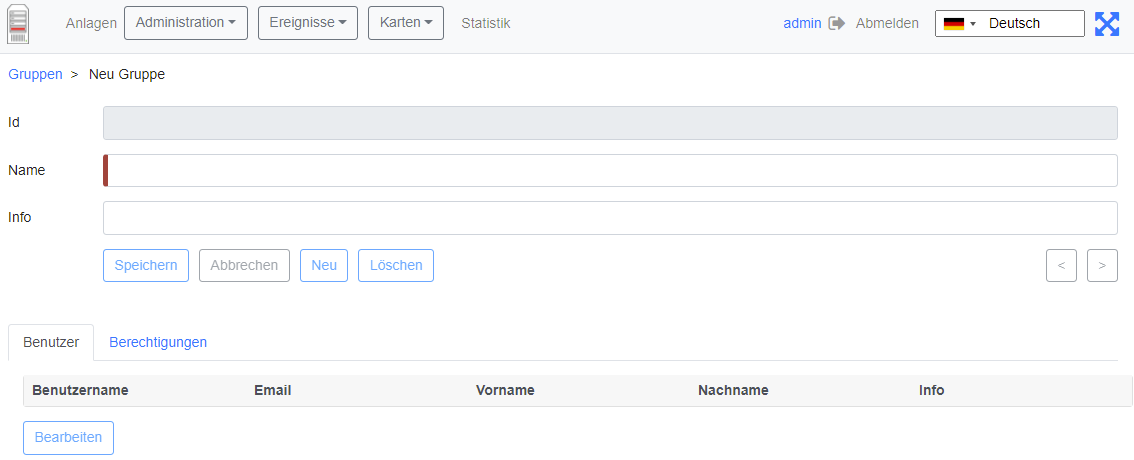
| Field Name | Description |
|---|---|
| Id | Automatically generated unique number of the group |
| Name | Name of the Group |
| Info | Description of the Group |
* Strictly required fields
The new group is created by clicking the Save button.
Edit existing Group
Click under Gruppen the Group you want edit
Users Tab
This tab allows you to customize the members of the group.
Permissions Tab
The permissions that are inherited by the members of the group are displayed under this tab.
All changes are applied by clicking the Save button.
Positions
https://<dns-name or ip-address>/citiesOn this page you can see an overview of all positions
Set up new Position
https://<dns-name or ip-address>/new-cityUnder Positions click on the button New Enter the name of the position and assign the position to a location using the dropdown field. Click on the Save button to create the position
Edit existing Position
Under Positions click to edit the position
Here you can edit the position name and location
Locations
https://<dns-name or ip-address>/countriesOn this page you can see an overview of all locations
Set up new Location
https://<dns-name or ip-address>/new-countryPress under Locations the button New
| Field Name | Description |
|---|---|
| Id | Automatically generated unique number of the location |
| Name* | Location name |
| Code* | Location country code |
| Info | Description of the location |
* Strictly required fields
Click on the Save button to create the position
Edit existing Location
Under Location , click the location you want to edit
Here you can edit the name, code and info of the location
Locations & Positions
https://<dns-name or ip-address>/locationsHere you can see an overview of all positions and their assigned locations
Configuration
https://<dns-name or ip-address>/configurationsEvents
Events
https://<dns-name or ip-address>/eventsIn this view, the events of all access controls are shown in an intuitive list view. There are filtering options and a name search for the events.
The following filters can be set:
- Location
- Position
- Factory
- Search by Event name
- Time Period
Event Definitions
https://<dns-name or ip-address>/event-definitionsIn this view, all events that the FMCU contains are listed and their event definition groups, supported states and categories are assigned.
Event definition Groups
https://<dns-name or ip-address>/event-definition-groupsAll event definition groups are listed under this tab.
Create a new Event definition Group
Click Event defenition groups on the Button New
| Fieldname | Description |
|---|---|
| ID | Automatically generated unique group number |
| Name | Name of the group |
| Info | Group description |
* Absolutely required fields
Under the Event defenition tab select the event definitions that are to be assigned to the group.
Event Subscriptions
https://<dns-name or ip-address>/event-subscriptionsThere is the possibility to link groups of alarm messages with groups of users. As a result, only group members are notified of alarm messages that are also grouped,
| Fieldname | Description |
|---|---|
| ID | internal value |
| Group | Summary of users |
| Ereignisdefinitionsgruppe | Event definition group |
| Locked | Notifications deactivated/activated |
| Info | Description field |
Notifications
https://<dns-name or ip-address>/notificationsSent notifications are displayed in this overview. You can adjust the view accordingly using a date filter.
Cards
Cards
https://<dns-name or ip-address>/cardsThis view shows an overview of the RFID cards in the system with the gates enabled for access.
Edit Cards
https://<dns-name or ip-address>/cards-editIn this view, cards can be added / removed and authorizations for individual gates can be defined.
| Field | Description |
|---|---|
| Barcode | Card content that is captured by the reader |
| Employee | Description field |
| Employee ID | Description field |
| Quantity | Number of accesses for this card |
Statistics
In this view, all activities for the assigned access controls are shown. You can adjust the view with date filters. It is possible to group the screen output, e.g. only to evaluate the number per day or month. Finally, the data can be exported in Excel format or CSV-format.


